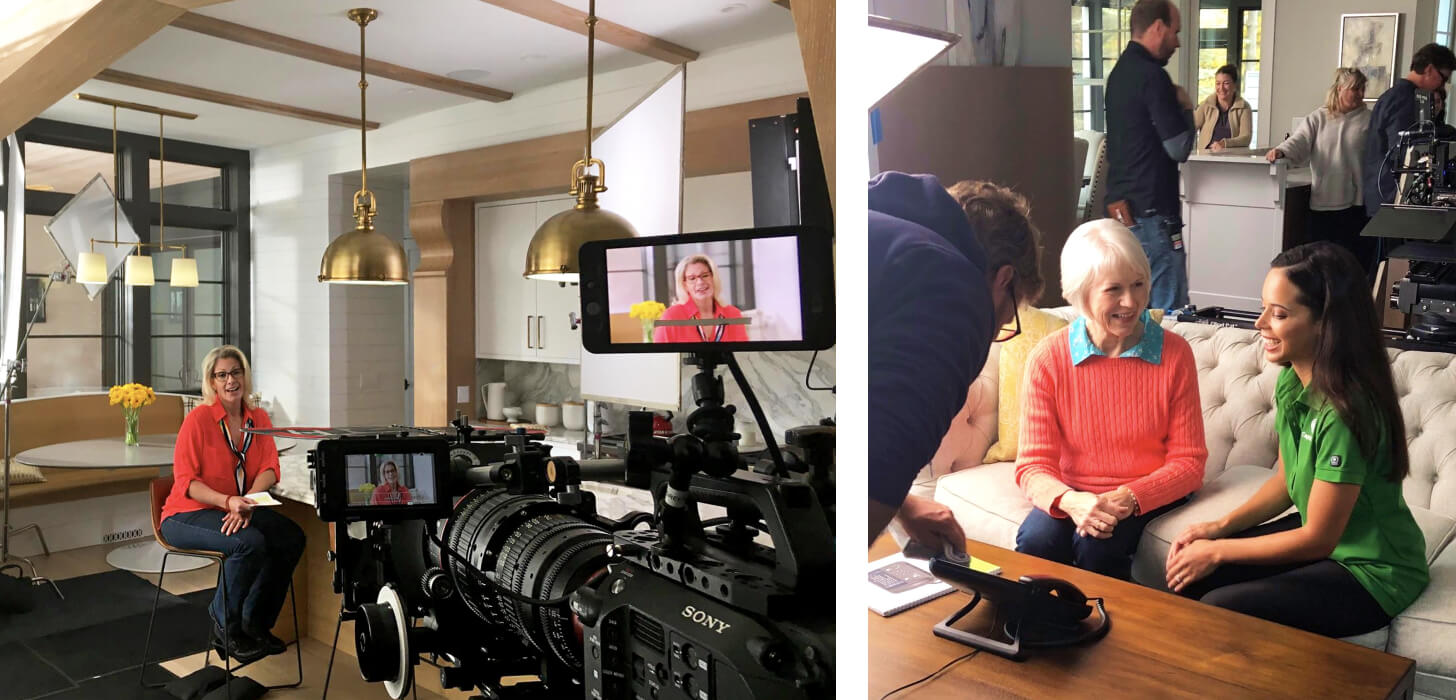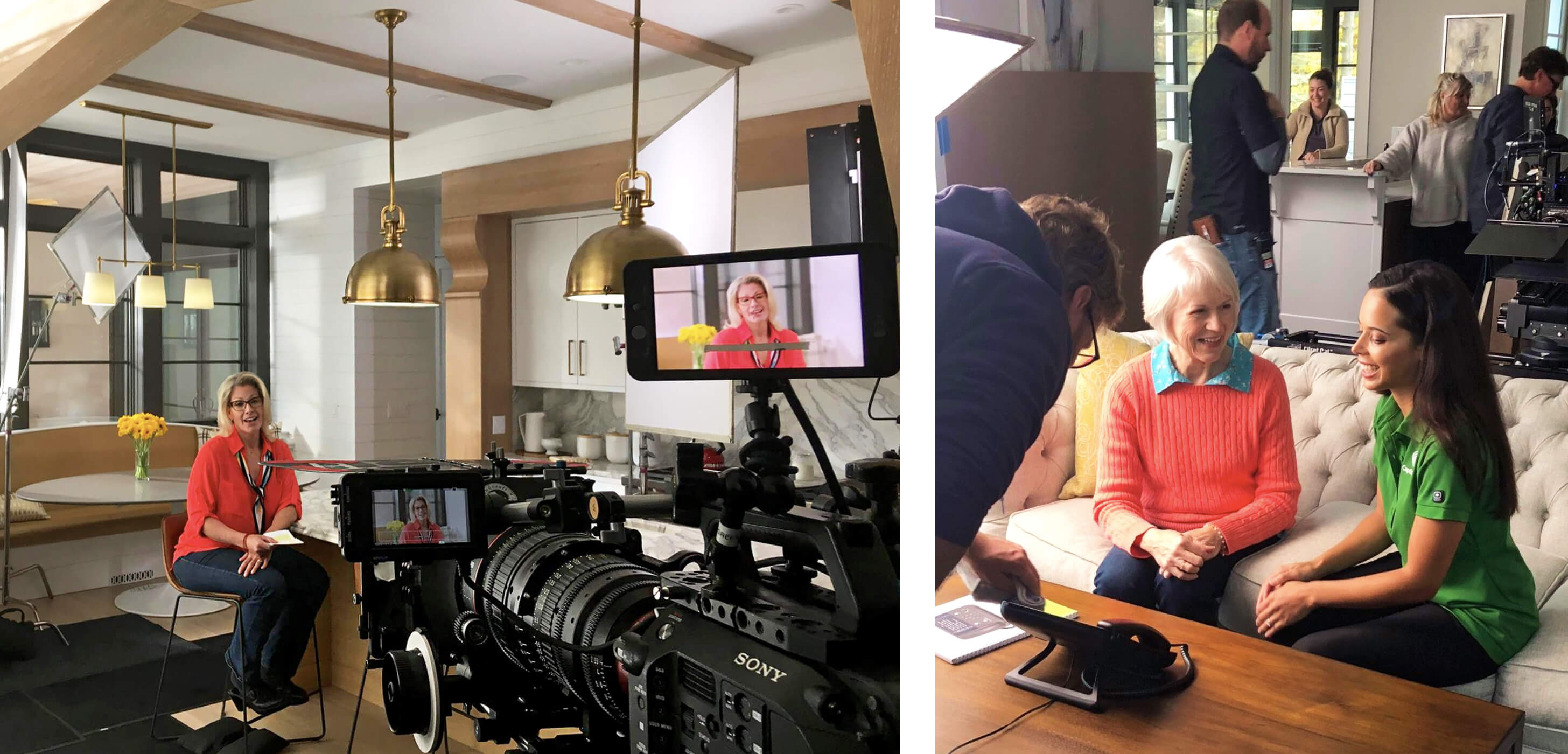Marketing Architects Became 40% More Efficient With Wrike
Headquarters
Minneapolis, MN
Industry
Television Advertising
# of Employees
75
# of Users
70
Top Challenges
No asset versioning, siloed communication, cumbersome approval process, lack of progress visibility
Why Wrike
A single tool to manage projects, centralize communication, automate approvals, and track OKR progress
Previous tools
Harvest, Pivotal Tracker, Basecamp
Integrations
Microsoft Outlook
Departments Using Wrike
Marketing, Legal, Finance, Creative, Analytics, Media, Business Development, Client Services, Strategy, Technology, Talent Services
Founded in 1997 in Minneapolis, Marketing Architects is an All-Inclusive TV agency. They give performance brands access to high-quality, effective TV campaigns without the traditional high entry cost and ongoing challenges of optimization, scale, and measurement. “We handle end-to-end, everything related to TV campaigns: creative, strategy, media placement, analytics, testing, attribution models, and conversion technology,” says Elena Hengel, the organization’s Director of Marketing. “And our clients only pay for media. That’s really what makes us stand out from the competition.”
20 min
response time
(reduced from one day)
40%
more efficient in
processes and workflows
25%
faster project completion
The Challenge
To successfully produce around 25 high-quality advertising spots each month, Marketing Architects has to be organized and synchronized. “We need to stay connected whether in the office or out on the shoot,” says the agency’s Senior Vice President of Creative, Eric Pilhofer. “We have a lot of moving pieces all over the country.”
Even though the agency was relying on technology to manage their teams, clients, and projects, the software they were leveraging had limited capabilities. Plus, they were using about eight different platforms, resulting in a cumbersome approval process, difficult asset management, siloed communication, and a lack of visibility across all their projects.
Pilhofer explains that while the tech stack in place was functional, it couldn’t deliver the single source of truth the agency needed to work efficiently. “Some software is great if you want file management or want to put a task list together. Others can facilitate project management or a Gantt chart. You can find applications that are great chat rooms for collaborating as a team. But in the final analysis, when we dug deep, these were not going to be the glue that will hold everything together.”


The Solution
After exploring Harvest, Pivotal Tracker, and Basecamp, Marketing Architects discovered that Wrike could serve all their needs in one platform. “It was Wrike’s combination of project management, communication, and automated approvals that sealed the deal for us as well as its competitive price,” states Pilhofer. “Now we’ve taken those eight platforms we were using and turned them into one.”
There’s real clarity across the team. Greater visibility. Greater synchronicity.
Eric Pilhofer, Senior Vice President of Creative, Marketing Architects
Custom and automated approval processes
“When you first get into Wrike,” explains Pilhofer, “you realize there are so many ways of doing the same thing. You can customize it. I can come up with automated workflows and solutions that, in the past, I would have had to hire a software programmer to develop.”
Customizing Wrike enables Marketing Architects to give each client a unique experience within the platform, catering to their work preferences and adding to a positive partnership. “We have set up an architecture under each advertiser where we have approval tasks and folders for radio spots, TV spots, presentations, creative briefs, storyboards, etc. We have created templates in each of those folders and customized project flows for each advertiser because each advertiser’s flow is slightly different.”
The agency can also expedite client approvals by adding their clients as collaborators within Wrike. “Whether it’s a script, an animatic, a storyboard review, or a spot,” continues Pilhofer, “all assets go out through the guest review module. We leverage Wrike because we want that feedback and those client comments pulled back into the system. We have found that client adoption has been fantastic. It used to take days to get a client approval. Now we can send something out and, within an afternoon, we’ll get a turnaround approval.”
This automated approval process also supports the agency’s internal teams. “All the assets that need to be approved internally and through our legal system go through an automated workflow,” explains Pilhofer. “Wrike gives us a documented approach to client feedback and to legal feedback. We could go back a year from now and see what was approved by whom, what those changes were. We have that paper trail, so to speak.”
“The slick part,” Pilhofer continues, “is the automation. To be able to put an asset up for approval, and if there are no problems, you never see that asset again? It just got approved and got out the door? That’s the beauty of it.”
Easier asset annotation and version tracking
Annotating and managing creative assets as well as internal documents within the same work management system was a key functionality on Marketing Architects’ checklist during their software vetting process. “The whole annotation side of Wrike is something we just had to have,” recalls Pilhofer.
“We’ve had clients ask, ‘Don’t you have some type of system where you could just send this to me and I could make comments right in there?’ We’ve never really trained our advertisers on how to comment, but they just kind of get Wrike intuitively, which is fantastic.” And if there are multiple clients needing to review a single asset, Pilhofer notes that “they can all get in and see each other’s comments and collaborate.”
The legal team for Marketing Architects also loves the annotation capabilities. “Once I turned the legal team on to the fact that they could comment on a script or a spot just like an advertiser does, it was like an aha moment,” recalls Pilhofer. The team was thrilled to avoid the red lining in a document and instead “just start making comments right on it in Wrike, or circle it, or whatever. So that has become very efficient for them.”
Once comments and annotations are made, the agency also leverages Wrike to ensure the correct revisions were applied and the correct version is delivered. “It may seem simplistic to keep track of what script was the approved script, but when you’re looking at 10 different Word documents and trying to figure out which one’s the latest modified, it’s craziness,” exclaims Pilhofer. “Wrike can automatically keep the right version at the top. And we can do a comparative A/B with previous versions to confirm that we made the legal comment or the client comment.”
We use Wrike to map out all our marketing campaigns. We love the ability to add different tasks and look at it in a Gantt view and just see how everything’s lining up. We use it for all our communication, and love it as a calendar to organize.
Elena Hengel, Director of Marketing, Marketing Architects
Better organization and communication
Marketing Architects also enjoys using Wrike’s organized folder structure to keep track of their higher level strategic initiatives. “From scripts to creative briefs to storyboards to presentation decks, those are now all archived in Wrike,” explains Pilhofer. “I could go in and see the spot that aired two years ago for the spot we’re currently working on and see the script, the storyboard, when the animatic got approval. So we’re using it for document management, and we’re starting to learn how to trick it out, so to speak.”
Another way the agency gets more out of Wrike is through the Microsoft Outlook integration. The agency “can forward any emails right into a particular place in Wrike so they can keep track of all their communication” and “minimize the email swirl,” as Pilhofer puts it.
Wrike’s versatile collaboration features even helped the agency stay connected and productive when COVID-19 forced them to close their Minneapolis office. “I don’t know how we would work as a production team without something like Wrike right now,” says Pilhofer. “We were continuing to produce advertising spots because we had our clients and partners in Wrike as collaborators, and we could use it as a communication tool.”
The platform’s ability to centralize and organize assets as well as the communication functionality makes it much more than just a project management tool for Marketing Architects; it’s a collaboration tool that helps their team work better.

“It was Wrike’s combination of project management, communication, and automated approvals that sealed the deal for us, as well as its competitive price.”
Eric Pilhofer, Senior Vice President of Creative, Marketing Architects
Real-time visibility into OKR progress
In 2019 while attending Collaborate, Wrike’s annual user conference, Pilhofer heard a speaker discuss how they were tracking OKRs (objectives and key results) within Wrike and wondered why his team was still bothering with a separate goal-alignment platform.
“We’re now keeping track of our OKRs in Wrike, and it’s become a very integral part of how we work,” explains Pilhofer. “We have built out a space specifically for OKRs, and we organize that based on the year and the quarter. Then within the quarter we can have every department listed and then within that department, we can have those specific OKRs.”
The added transparency in the agency’s goals helps leaders at Marketing Architects stay informed and understand how departments are hitting their targets. “It’s very easy to get a global view of how things are progressing,” continues Pilhofer, “because you can see whether it’s 25%, 50%, or 75% done. Wrike allows everybody in charge of a particular OKR to go in and make a status update on a weekly basis, so it’s given us really great visibility into our goals.”
Results
With one platform to keep them informed and connected, Marketing Architects is now 40% more efficient and can deliver their impactful TV campaigns 25% faster. Wrike has streamlined the agency’s approval process, simplified asset versioning, centralized communication, and increased visibility across their portfolio.
Hengel notes how ingrained Wrike is in their culture now, making an impact at every level. “I use Wrike for everything that we do now,” she explains. “Everything from organizing projects, assigning different tasks, calendar views, and Gantt charts. We use it to map out all our marketing campaigns. It’s all personalized to how we work.”
“Not only are we more efficient,” Pilhofer concludes, “but I think even more so there’s real clarity across the team of where we are with a project, what’s going on, what is holding it up, what is my responsibility. Wrike definitely has allowed us to have greater visibility, greater synchronicity. It gives us a lot of confidence because there’s no confusion any longer, and it takes a bit of that human error out.”
Find out how Wrike can help your business
Schedule some time to talk with one of our experts




